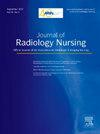革命性的乳腺癌筛查:将人工智能与临床检查结合起来,在南非进行针对性的治疗
Q3 Nursing
引用次数: 0
摘要
乳腺癌仍然是全球一个重要的公共卫生问题,早期发现是通过降低临床分期来改善结果的关键。在低收入和中等收入国家,由于成本高、基础设施不足和训练有素的专业人员短缺,获得乳房x光检查等传统筛查方法的机会有限。本研究评估了人工智能(AI)增强诊断工具乳腺AI与临床乳腺检查(CBE)的整合,以改善资源有限环境下的乳腺癌筛查。尽管该系统已证明具有临床实用性,但在成本效益、基础设施准备、供应商培训等方面的挑战仍有待进一步探索。目的和目的本研究旨在评估乳腺人工智能系统与CBE联合用于乳腺癌筛查的临床应用。目的包括评估该系统的诊断性能,其实现临床分期降低的潜力,以及其减少不必要的外科转诊的能力。该研究还旨在确定需要改进的领域,如后勤障碍和扩大规模的可行性。方法在豪登省达斯波特医院进行为期6个月的前瞻性比较队列研究。共有1617名年龄在25至85岁之间的女性使用CBE和乳房人工智能进行了筛查。数据收集包括风险分层、乳腺成像报告和数据系统(BIRADS)评分和转诊结果。统计学分析采用McNemar检验比较CBE和乳腺AI的诊断效能,卡方值为1.8,p值为0.1797。还举办了关于认识乳腺癌的教育会议,以鼓励社区参与。结果在1617名女性中,530名出现临床症状或危险因素。8例患者需要对BIRADS-3结果进行短期随访,其中5例由乳腺AI识别,2例由CBE识别。没有病例被分类为BIRADS-5需要立即干预。乳房人工智能系统显示出更高的灵敏度,与CBE相比,多识别了4例阳性病例,从而减少了假阴性。乳房人工智能的风险分层范围在0 - 25%之间,表明恶性肿瘤的可能性较低,但确保了对有症状病例的准确转诊。该系统为CBE遗漏的附件乳腺组织脂肪瘤等疾病提供了及时的手术意见。尽管有这些发现,但扩展该技术的后勤和成本效益障碍仍未得到解决。结论将乳腺人工智能整合到筛查项目中,有望提高诊断准确性,实现临床分期降低,减少不必要的手术转诊。该系统与CBE的辅助使用显示了在资源有限的情况下简化保健服务提供的潜力。然而,该研究强调,需要进一步研究扩展这项技术,解决后勤挑战,并评估其成本效益。未来的工作应侧重于扩大样本人群,将人工智能驱动的工具纳入国家筛查方案,并加强提供者培训,以优化患者结果和资源分配。本文章由计算机程序翻译,如有差异,请以英文原文为准。
Revolutionizing Breast Cancer Screening: Integrating Artificial Intelligence With Clinical Examination for Targeted Care in South Africa
Introduction
Breast cancer remains a critical public health concern globally, with early detection being pivotal to improving outcomes through clinical downstaging. In low- and middle-income countries, access to traditional screening methods like mammography is limited due to high costs, infrastructure deficits, and shortages of trained professionals. This study evaluates the integration of Breast AI, an artificial intelligence (AI)-enhanced diagnostic tool, with Clinical Breast Examination (CBE) to improve breast cancer screening in resource-limited settings. Although the system demonstrated clinical utility, challenges such as cost-effectiveness, infrastructure readiness, and provider training for scaling this technology warrant further exploration.
Aim and objectives
This study aimed to assess the clinical utility of the Breast AI system in conjunction with CBE for breast cancer screening. Objectives included evaluating the system's diagnostic performance, its potential to achieve clinical downstaging, and its ability to reduce unnecessary surgical referrals. The study also aimed to identify areas for improvement, such as logistical barriers and scaling feasibility.
Methods
A prospective comparative cohort study was conducted at Daspoort PoliClinic in Gauteng Province over 6 months. A total of 1,617 women aged 25 to 85 years were screened using CBE and Breast AI. Data collection included risk stratification, Breast Imaging Reporting and Data System (BIRADS) scoring, and referral outcomes. Statistical analyses compared the diagnostic performance of CBE and Breast AI using McNemar's test, with a Chi-square value of 1.8 and a p value of 0.1797. Educational sessions on breast cancer awareness were also conducted to encourage community engagement.
Results
Of the 1,617 women, 530 presented with clinical signs or risk factors. Eight patients required short-term follow-up for BIRADS-3 findings, five of whom were identified by Breast AI, compared to two identified by CBE. No cases were classified as BIRADS-5 requiring immediate intervention. The Breast AI system demonstrated improved sensitivity, identifying four additional positive cases compared to CBE, thereby reducing false negatives. Risk stratification by Breast AI ranged between 0 and 25%, indicating a low probability of malignancy but ensuring accurate referral for symptomatic cases. The system facilitated timely surgical opinions for conditions like accessory breast tissue with lipoma that CBE had missed. Despite these findings, logistical and cost-effectiveness barriers to scaling the technology remain unaddressed.
Conclusion
The integration of Breast AI into screening programs showed promise in enhancing diagnostic accuracy, achieving clinical downstaging, and reducing unnecessary surgical referrals. The system's adjunctive use with CBE demonstrated potential for streamlining health-care delivery in resource-limited settings. However, the study highlights the need for further research on scaling this technology, addressing logistical challenges, and evaluating its cost-effectiveness. Future efforts should focus on expanding the sample population, integrating AI-driven tools into national screening protocols, and enhancing provider training to optimize patient outcomes and resource allocation.
求助全文
通过发布文献求助,成功后即可免费获取论文全文。
去求助
来源期刊

Journal of Radiology Nursing
Nursing-Advanced and Specialized Nursing
CiteScore
0.80
自引率
0.00%
发文量
95
审稿时长
57 days
期刊介绍:
The Journal of Radiology Nursing promotes the highest quality patient care in the diagnostic and therapeutic imaging environments. The content is intended to show radiology nurses how to practice with compassion, competence, and commitment, not only to patients but also to the profession of nursing as a whole. The journal goals mirror those of the Association for Radiologic & Imaging Nursing: to provide, promote, maintain , and continuously improve patient care through education, standards, professional growth, and collaboration with other health care provides.
 求助内容:
求助内容: 应助结果提醒方式:
应助结果提醒方式:


